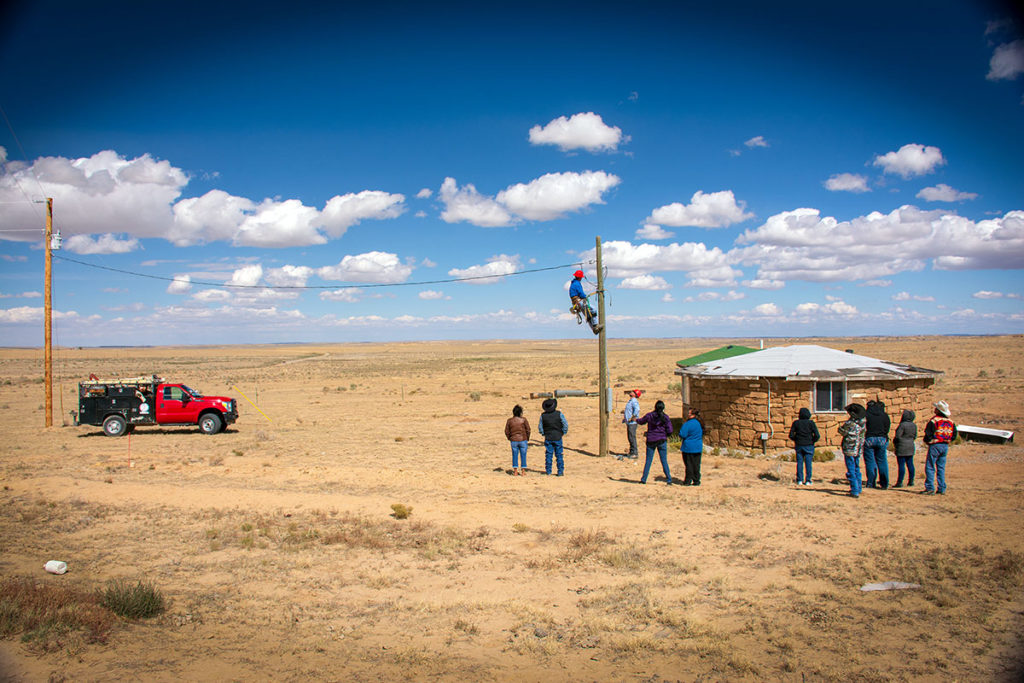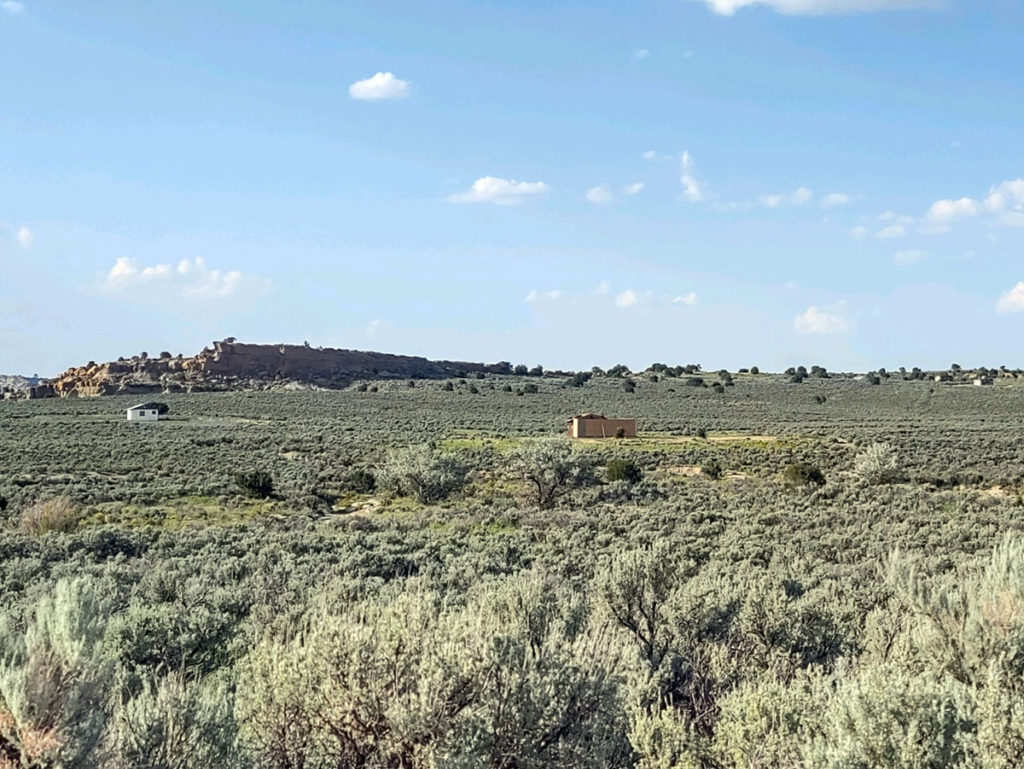
When Jimmy Augustine Jr. flicked on a light switch for the first time in his mother’s home, he said it brought tears to his eyes.
“All these years to get lights.”
Augustine’s 73-year-old mother, Dorothy, lives on Navajo Nation land in New Mexico and until recently was one of thousands of residents there whose homes, because of logistical and bureaucratic holdups, have remained unserved by central station power.
Now, thanks to a silver lining of the COVID-19 pandemic, electrification projects on Navajo land that have languished for decades are suddenly getting influxes of federal and state funding and renewed prioritization.
In many cases, it’s electric cooperatives that are completing the work. Dorothy’s home is now connected to Continental Divide Electric Cooperative power lines, part of an 11-mile line extension begun in the 1980s and finally completed in October 2020 using federal relief funds.
“I thank everyone who did all the work and effort,” said Jimmy.
The program credited with spurring the drive to serve Navajo Nation homes is the 2020 Coronavirus Aid, Relief and Economic Security or CARES Act, the $2 trillion federal stimulus package aimed at combating the economic slowdown caused by the pandemic.
“The Navajo Tribal Utility Authority received approval of its funding in August and all the work had to be completed by December, so there was a very tight timeline to get these projects finished,” said Deenise Becenti, NTUA’s government and public affairs manager. “All the utilities involved knew we were facing deadlines, so they worked hard to get as many homes connected as possible before the end of the year.”
The NTUA was created in 1959 to serve the Navajo Nation’s 27,000-square-mile territory, covering parts of Arizona, New Mexico and Utah. But land allotment policies administered by the Bureau of Indian Affairs since the 1880s often complicate right-of-way and service decisions, and in some instances, approvals to build infrastructure can take decades and involve dozens of property allotment holders.
“We have thousands of homes in the Navajo Nation that lack access to basic electricity, water and natural gas, and wastewater service,” said Becenti. “Our goal is to connect as many people as possible to services every year, and recently we’ve come to include broadband internet service in our projects as well.”
The Navajo Nation Council works to expand utility services using NTUA but also contracts with neighboring utilities, including co-ops with existing lines closer to underserved communities. CARES Act funds have helped finance 60 projects so far, with 49 involving three separate electric co-ops.

Grants-based CDEC, Jemez Mountains Electric Cooperative, headquartered in Espanola, New Mexico, and Socorro Electric Cooperative, based in Socorro, New Mexico, have waiting lists of families living on reservation lands with pending applications for electric service.
“Approximately 1,000 Navajo families in our geographic area currently have no service,” said Continental Divide CEO Robert Castillo. “Last December we were able to complete 24 electric projects on behalf of Eastern Agency Navajo families.”
Access to electricity not only means lighting and refrigeration, it also can end the hard work of hauling water and opens the door to telehealth, distance learning and telework. The lack of such modern conveniences often prompt young families to leave the area, said Carmen Campbell, a district manager for Jemez Mountain EC who also serves as the co-op’s liaison to the Navajo Nation.
“I had a phone call recently from a lady that has been trying to get lines built to her and her surrounding families for more than 15 years,” said Campbell. “She pleaded, ‘My grandkids would visit me more if I had electricity.’”
The availability of power can also restore generational ties, bringing families back to land where loved ones have lived for more than a century.
“We’re hearing from younger families once power lines reach their traditional ancestral homestead, ‘This is where we want to raise our children, where our grandparents once lived,’” said NTUA’s Becenti. “Some of them are moving back from the cities and building houses, and we expect to see a lot more of that as access to power and other utilities expands.”
Derrill Holly is a staff writer for NRECA.